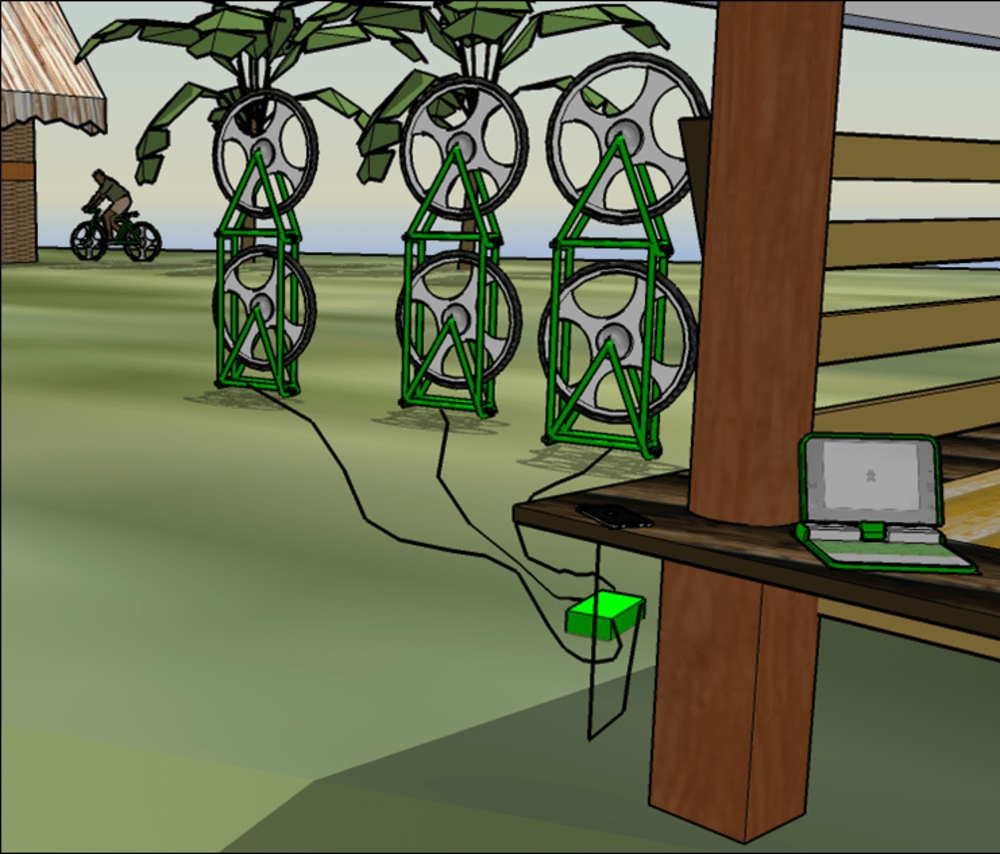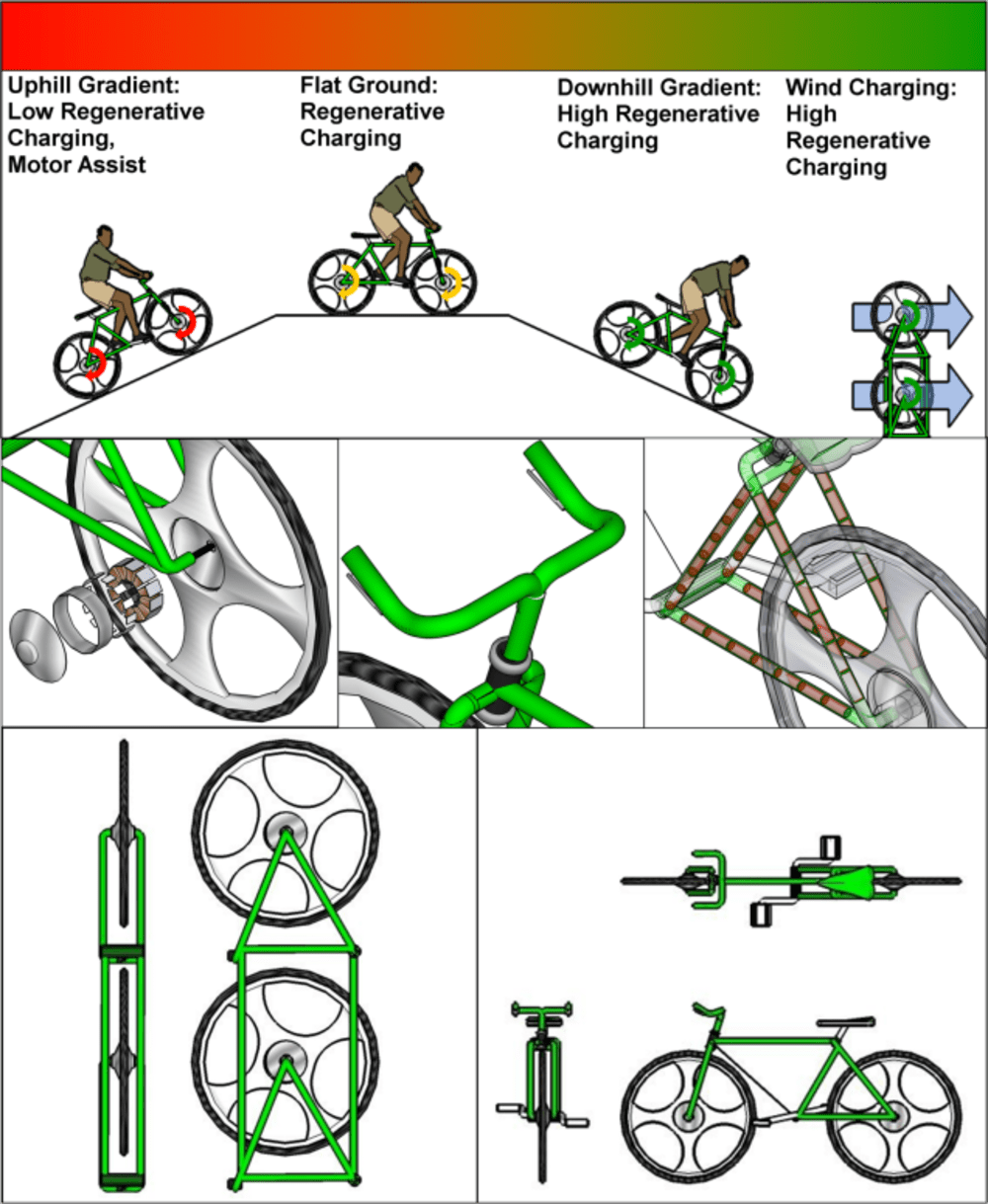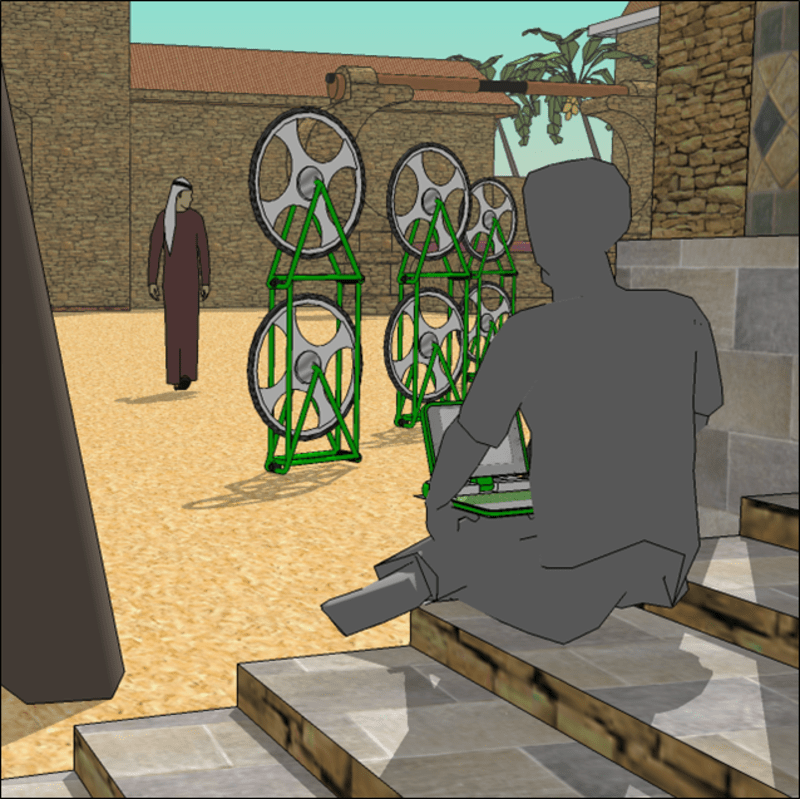Try-brid Vehicle
Human/Electric/Wind Powered Bicycle
This solution seeks to address a multitude of economic and ecological issues by stimulating development in developing countries by providing local low voltage electricity for lighting, cellular and satellite communications, laptops and other small electronic devices. Currently 1.7 billion people worldwide are without electricity for basic human needs and economic development. According to a recent study by Lighting Africa, Sub-Saharan Africa has a rural electricity access rate of 2%. Among the poorest of poor, lighting represents 10-15% of the total house income while providing little in return. Mobile phones are quickly becoming a means of escaping poverty despite the unavailability of electricity. Although villagers benefit with better connectivity, charging their cellular phones is still a major problem for many rural poor in developing countries. Villagers in Kajrai (Sagar district of Madhya Pradesh) walk almost 20 km just to charge their cell phones. The primary goals are to lesson demand on non-governmental aid organizations by extending the work day, improving education, creating entrepreneurial opportunities and gender equity for women. The most common mode of transportation in developing nations is the bicycle; we looked at this paradigm as a starting point. With few modifications the bicycle can address several other obstacles that developing countries face. The design approach was to create something that could be assembled with simple tools. The frame is composed of small diameter tubing that can be easily bent on a rig. The chain link and sprocket was eliminated in favor of a cam drive. A more traditional chain link drive creates manufacturing challenges and maintenance concerns. Cam drives are becoming more readily available and can be adapted to a variety of frame sizes. Composite wheels were selected for ease of manufacturing and low maintenance. Composite wheels also allow for the incorporation of electric motors. The electric motors are wired to a lithium ion rechargeable battery array integrated within the frame. When the wheels spin, the batteries are recharged. The motors can propel the bicycle or recharge the battery array. Additionally, the bicycle frame can be configured to harness the wind to charge the array and power solid state lighting or small electric devices. The power from this battery array can be used to power a wide variety of small electronic devices. This solution seeks to enable developing countries to propel themselves to a brighter, greener and more productive future. There are over one billion bicycles (compared to half billion automobiles) it is a universally accessible mode of transportation and we feel it can also transport people to financial independence and a brighter future.
Like this entry?
-
About the Entrant
- Name:Tom Miller
- Type of entry:individual
- Hardware used for this entry:macbookSoftware used for this entry:sketch up, publisher
- Patent status:pending








